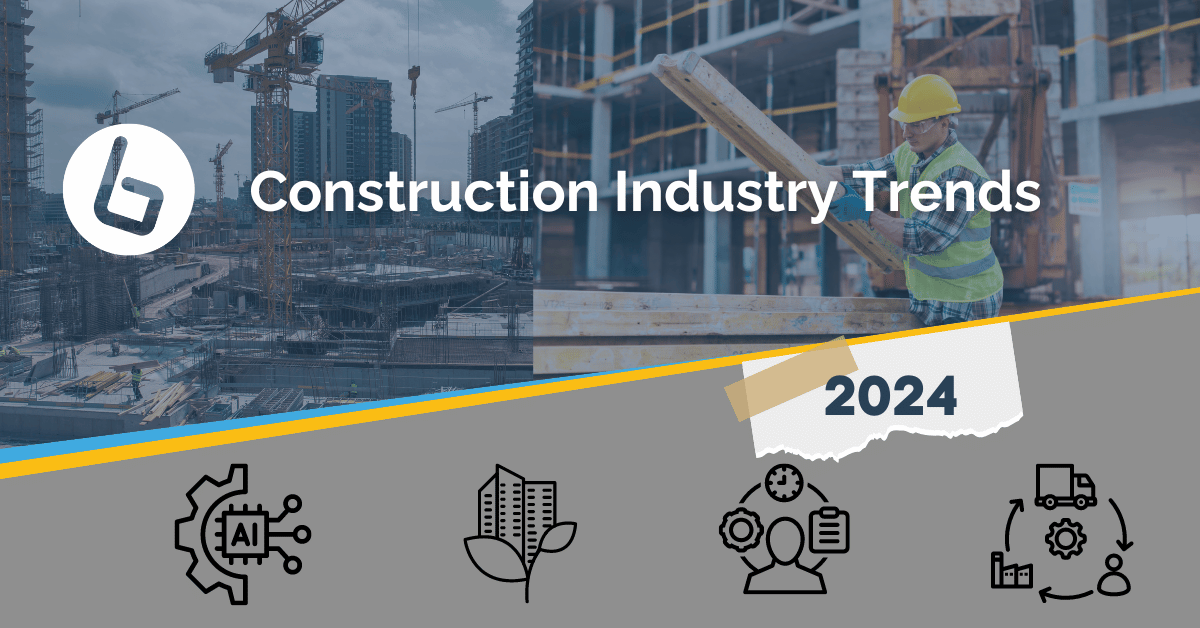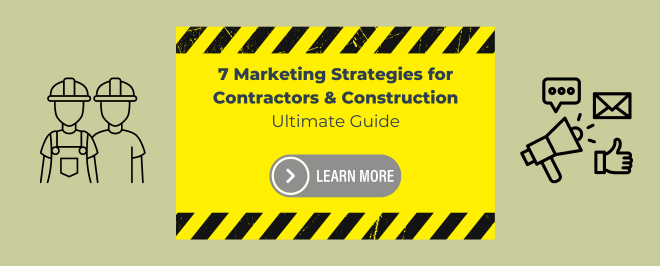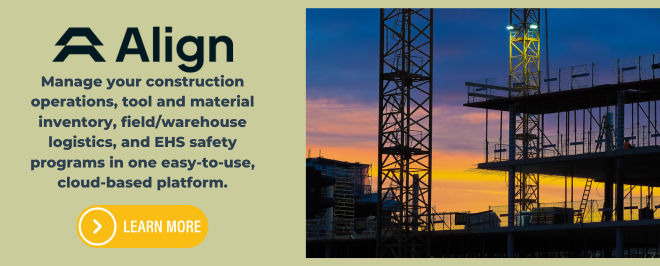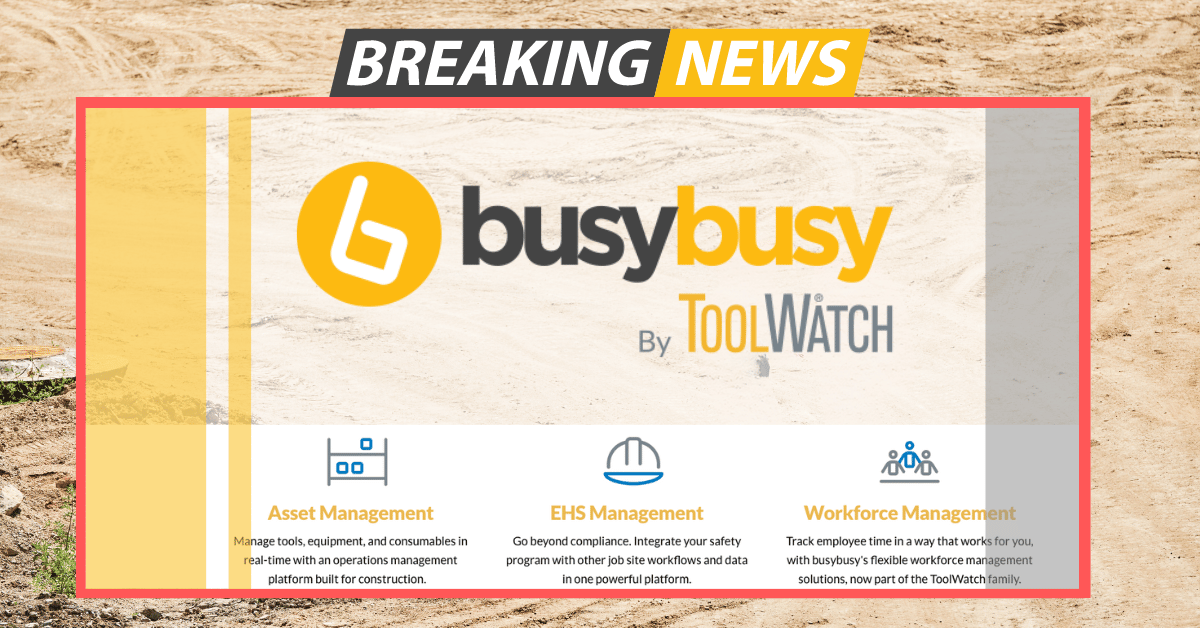
In today’s ever-evolving construction industry, staying informed about the latest trends is crucial for professionals looking to stay ahead of the curve. From technological advancements to sustainable practices, the landscape of construction is constantly shifting.
We’ve previously talked about variables that affect material cost, labor cost, and what contractors can do to keep up with this ever changing industry.
In this blog post, we explore the current construction trends shaping the industry, including the impact of emerging technologies, the rise of green construction practices, and the importance of effective construction management.
Join us as we explore the key insights and predictions that are shaping the future of construction trends.
Why are Construction Trends Important?
Construction trends reflect the evolving needs and demands of clients, regulatory changes, and advancements in technology. By staying informed about these trends, professionals can anticipate market shifts, identify new opportunities, and make informed decisions for their projects. Additionally, understanding construction trends allows industry stakeholders to stay ahead of competitors and maintain a competitive edge.
Current Trends in Construction Technology
Technology has revolutionized the construction industry, bringing about remarkable advancements in various aspects of the field. In this section, we will explore the current trends in construction technology that are reshaping the way projects are planned, designed, and executed.
Emerging Technologies in Construction
- Building Information Modeling (BIM): BIM is a digital representation of a construction project that allows for collaborative planning, design, and management. It enables stakeholders to visualize the project in 3D, identify clashes, and optimize workflows, resulting in improved efficiency and reduced costs.
- Drones: Unmanned aerial vehicles (UAVs) or drones are being increasingly used in construction for tasks such as site surveying, inspections, and progress monitoring. Drones provide accurate and real-time data, helping professionals make informed decisions, enhance safety, and streamline project management.
- Augmented Reality (AR) and Virtual Reality (VR): AR and VR technologies are transforming the way construction projects are visualized and experienced. They allow stakeholders to virtually walk through the project, make design changes in real-time, and identify potential issues before construction begins, resulting in improved accuracy and client satisfaction.
- Robotics and Automation: Robotic technology is being integrated into construction processes, improving efficiency and reducing labor-intensive tasks. Robots are used for tasks such as bricklaying, concrete pouring, and material handling, resulting in increased productivity and reduced labor costs.
- Internet of Things (IoT): The IoT connects devices and equipment on construction sites, allowing for real-time data collection and analysis. IoT devices enable remote monitoring of equipment performance, predictive maintenance, and improved safety through sensors that detect hazards and issue alerts.
Benefits of Implementing New Technology
- Improved Productivity: Construction technology enables faster and more accurate processes, resulting in increased productivity. Automation and digital tools eliminate manual errors, reduce rework, and optimize workflows, leading to time and cost savings.
- Enhanced Collaboration: Technology facilitates seamless communication and collaboration among project stakeholders. It enables real-time sharing of information, coordination between teams, and remote collaboration, improving project outcomes and reducing delays.
- Cost Savings: Adopting technology can lead to significant cost savings in construction projects. By optimizing processes, reducing errors, and improving efficiency, professionals can minimize material waste, labor costs, and project delays, resulting in improved profitability.
- Improved Safety: Technology integration enhances safety on construction sites. Real-time data collection and analysis enable proactive identification of potential hazards, while automation reduces the need for manual labor in high-risk areas, reducing the likelihood of accidents.
Challenges and Solutions
While construction technology offers numerous benefits, there are also challenges associated with its implementation. Some common challenges include:
- Cost of Implementation: Adopting new technology can involve significant upfront costs, including equipment, software, and training. However, the long-term benefits often outweigh the initial investment.
- Lack of Skilled Workforce: The rapid pace of technological advancements can result in a shortage of skilled workers who are familiar with the latest technologies. Training and upskilling programs can help bridge this gap.
- Data Security and Privacy: Construction projects involve sensitive data that needs to be protected from cyber threats. Implementing robust security measures and ensuring compliance with data protection regulations can address these concerns.
- Integration and Compatibility: Integrating new technologies with existing systems and ensuring compatibility can be challenging. Collaborating with technology providers and conducting thorough testing can help address these issues.
By understanding and addressing these challenges, construction professionals can harness the power of technology to improve project outcomes, enhance efficiency, and gain a competitive edge in the industry.
Green Construction Trends
In recent years, there has been a growing emphasis on sustainability and environmental responsibility in the construction industry. Green construction practices aim to reduce the environmental impact of building projects while promoting energy efficiency and resource conservation. In this section, we will explore the reasons behind the popularity of green construction, innovative practices in sustainable building, and the impact of green construction on the industry.
Why Green Construction is Becoming Popular
- Environmental Concerns: With increasing awareness of climate change and the need to reduce carbon emissions, there is a growing demand for environmentally conscious construction practices. Green construction offers a way to mitigate the environmental impact of buildings, reducing energy consumption and waste generation.
- Regulatory Requirements: Governments and regulatory bodies are implementing stricter environmental regulations and building codes that promote sustainable practices. Compliance with these regulations is driving the adoption of green construction methods.
- Market Demand and Public Perception: Consumers, investors, and tenants are increasingly prioritizing sustainability when choosing buildings and construction projects. Green buildings are often perceived as healthier, more comfortable, and more valuable, leading to increased market demand.
- Long-Term Cost Savings: While green construction may involve higher upfront costs, it offers long-term cost savings through reduced energy consumption and lower operational expenses. Energy-efficient buildings can significantly lower utility bills and maintenance costs over the lifespan of the structure.
Innovations in Green Construction
- Energy-Efficient Design: Green construction focuses on optimizing building design to maximize energy efficiency. This includes proper insulation, energy-efficient windows, strategic placement of windows for natural lighting, and the use of renewable energy sources such as solar panels or geothermal systems.
- Water Conservation: Sustainable construction practices aim to minimize water consumption through the use of water-efficient fixtures, rainwater harvesting systems, and graywater recycling. These practices reduce strain on local water resources and contribute to water conservation.
- Material Selection: Green construction promotes the use of sustainable and recycled materials, reducing the environmental impact associated with mining and manufacturing. Additionally, the use of locally sourced materials reduces transportation costs and carbon emissions.
- Waste Management: Proper waste management is a crucial aspect of green construction. Recycling construction waste, implementing waste reduction strategies, and using recycled materials in construction contribute to a circular economy and reduce landfill waste.
Impact of Green Construction on the Industry
- Job Creation: The shift towards green construction has created new job opportunities in sustainable design, energy auditing, renewable energy installation, and green building certification. This trend is expected to continue, providing employment opportunities in the industry.
- Industry Transformation: Green construction practices are transforming the construction industry by encouraging innovation and driving the development of new technologies and materials. This shift towards sustainability is shaping the future of construction and influencing industry standards.
- Health and Well-being: Green buildings prioritize occupant health and well-being by providing better indoor air quality, natural lighting, and thermal comfort. This focus on human-centric design has a positive impact on the well-being and productivity of building occupants.
- Corporate Social Responsibility: Green construction aligns with corporate social responsibility goals, allowing companies to demonstrate their commitment to sustainability and environmental stewardship. This can enhance their reputation, attract environmentally conscious clients, and contribute to a positive brand image.
As green construction continues to gain momentum, professionals in the construction industry must embrace sustainable practices to meet market demands, comply with regulations, and contribute to a more sustainable future. By implementing innovative green building techniques, the industry can reduce its environmental footprint, improve energy efficiency, and create healthier and more sustainable structures.
Trends in Construction Management
Effective construction management is crucial for the successful completion of projects on time, within budget, and according to quality standards. As the industry evolves, new trends in construction management are emerging to optimize project planning, execution, and control. In this section, we will explore the importance of effective construction management, modern management techniques, and the future of construction management.
Importance of Effective Construction Management
- Project Planning and Coordination: Construction management ensures efficient project planning, including resource allocation, scheduling, and coordination of various stakeholders. Effective management ensures that tasks are executed in a timely manner, minimizing delays and optimizing project outcomes.
- Budget and Cost Control: Construction management involves careful budgeting and cost control throughout the project lifecycle. Effective management techniques help monitor expenditures, identify cost-saving opportunities, and prevent budget overruns.
- Risk Management: Construction projects are inherently risky, and effective construction management helps identify, assess, and mitigate these risks. By implementing risk management strategies, such as contingency planning and proactive problem-solving, potential issues can be addressed before they escalate.
- Quality Assurance: Construction management ensures that projects meet quality standards and client expectations. It involves quality control processes, inspections, and adherence to industry regulations to deliver a high-quality product.
Modern Management Techniques
- Lean Construction: Lean construction focuses on maximizing value and minimizing waste throughout the construction process. It emphasizes collaborative planning, streamlined workflows, and continuous improvement to increase efficiency and reduce costs.
- Integrated Project Delivery (IPD): IPD is a collaborative approach that involves early involvement of key project stakeholders, including contractors, architects, and engineers. This integrated approach fosters effective communication, shared decision-making, and a unified project vision, resulting in improved project outcomes.
- Agile Project Management: Agile project management, adapted from software development, is gaining popularity in construction. It emphasizes flexibility, adaptability, and iterative decision-making, allowing for quick adjustments to changing project requirements and reducing the impact of unforeseen challenges.
The Future of Construction Management
- Digital Transformation: Construction management is experiencing a digital transformation, with the integration of advanced technologies such as artificial intelligence, Internet of Things (IoT), and data analytics. These technologies enable real-time monitoring, predictive analysis, and automation, revolutionizing project management processes.
- Collaborative Platforms: The future of construction management involves the use of collaborative platforms that facilitate seamless communication, document sharing, and project tracking across multiple stakeholders. These platforms improve transparency, enhance collaboration, and streamline project management.
- Sustainability Integration: Construction management will increasingly focus on sustainability, with the integration of green practices and materials. Effective management techniques will be necessary to implement sustainable strategies, track environmental metrics, and ensure compliance with green building standards.
- Virtual and Augmented Reality: Virtual and augmented reality technologies will play a significant role in construction management. They will enable virtual walkthroughs, remote inspections, and real-time visualization of project progress, leading to improved communication, better decision-making, and enhanced project monitoring.
As the construction industry evolves, effective construction management techniques will continue to adapt to meet the changing needs of projects and stakeholders. By embracing modern management practices, leveraging technology, and anticipating future trends, construction professionals can enhance project outcomes, improve efficiency, and drive success in the industry.
Benefits of Keeping up with Construction Trends
- Market Opportunities: Being aware of emerging trends helps professionals identify untapped market opportunities. By aligning their services with the demands of the market, companies can attract new clients and expand their business.
- Enhanced Efficiency: Construction trends often introduce innovative technologies, methodologies, and materials that can streamline processes and improve efficiency. By adopting these advancements, professionals can reduce project timelines, enhance productivity, and reduce costs.
- Meeting Client Expectations: Clients are increasingly seeking construction firms that stay up-to-date with the latest trends. By incorporating these trends into their projects, professionals can meet client expectations, enhance customer satisfaction, and build strong relationships.
- Sustainability and Environmental Impact: Construction trends often focus on sustainable practices and environmentally friendly solutions. By embracing green construction, professionals can reduce their carbon footprint, comply with regulations, and contribute to a more sustainable future.
- Improved Safety: Construction trends also address safety concerns by introducing new safety protocols, equipment, and technologies. By adopting these measures, professionals can create safer working environments, minimize accidents, and protect their workforce.
Overall, understanding and embracing construction trends is essential for professionals who wish to thrive in the industry. By staying informed and adapting their practices to align with emerging trends, construction companies can ensure long-term success and contribute to the overall growth and development of the industry.
Impact of COVID-19 on Construction Trends
The COVID-19 pandemic has had a profound impact on industries worldwide, and the construction industry is no exception. From supply chain disruptions to changing safety protocols, the pandemic has influenced construction trends in various ways. In this section, we will explore the challenges faced during the pandemic, pandemic-induced construction trends, and predictions for the post-pandemic construction industry.
Challenges Faced During the Pandemic
- Supply Chain Disruptions: The pandemic caused disruptions in the global supply chain, leading to delays in the delivery of construction materials and equipment. Lockdowns, travel restrictions, and factory shutdowns impacted the availability and timely delivery of essential resources.
- Workforce Constraints: Construction sites faced workforce challenges due to health concerns and restrictions on movement. Labor shortages, reduced productivity, and increased absenteeism resulted in project delays and increased costs.
- Safety Protocol Implementation: Construction projects had to adapt to new safety protocols to mitigate the spread of the virus. This included implementing social distancing measures, providing personal protective equipment (PPE), and conducting frequent sanitization, resulting in additional costs and operational complexities.
Pandemic-Induced Construction Trends
- Remote Collaboration and Communication: The pandemic accelerated the adoption of remote collaboration tools and technologies. Virtual meetings, digital project management platforms, and cloud-based document sharing became essential for effective communication and project coordination.
- Off-Site and Modular Construction: To mitigate the impact of labor shortages and ensure safety, off-site and modular construction methods gained popularity. These approaches involve prefabrication of components in a controlled environment, reducing on-site labor requirements and enhancing project efficiency.
- Health and Safety Measures: The pandemic emphasized the importance of health and safety in construction. Enhanced safety protocols, including temperature checks, regular testing, and increased hygiene measures, became standard practices on construction sites.
- Digitization and Automation: The need for contactless operations and increased efficiency led to the adoption of digitization and automation in various construction processes. From digital project documentation to automated equipment and robotics, technology played a crucial role in ensuring continued project progress.
Post-Pandemic Predictions for the Construction Industry
- Resilient Supply Chains: The pandemic highlighted the vulnerability of global supply chains. Post-pandemic, the construction industry is expected to prioritize resilient supply chains, with a focus on local sourcing, alternative suppliers, and inventory management.
- Increased Emphasis on Health and Safety: The importance of health and safety in construction is expected to remain high even after the pandemic. Construction companies will continue to invest in safety protocols, training, and technologies to ensure the well-being of their workforce.
- Continued Digitization and Automation: The advancements made in digitization and automation during the pandemic are likely to persist. Construction companies will leverage technology for remote collaboration, digital documentation, and automated processes to improve efficiency and productivity.
- Sustainable and Resilient Designs: The pandemic has reinforced the need for resilient and sustainable building designs. The industry is expected to prioritize energy-efficient and health-conscious building practices, incorporating features such as improved ventilation, touchless systems, and flexible spaces.
The lasting impact of the COVID-19 pandemic on the construction industry will continue to shape trends and practices in the coming years. By adapting to the challenges faced during the pandemic and embracing the opportunities for innovation and resilience, the construction industry can thrive in the post-pandemic era.
Conclusion
In conclusion, understanding and embracing construction trends is essential for professionals in the industry. By staying informed about emerging technologies, green construction practices, effective construction management techniques, and the impact of global events, construction companies can adapt to the changing landscape and thrive in the future. The future of construction trends holds immense potential for innovation, sustainability, and resilience, shaping the industry for years to come.
















